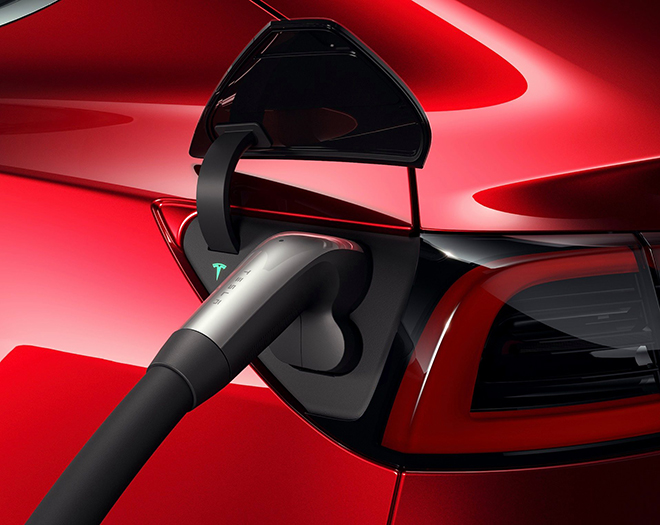In a move that has wide-reaching implications for the future of the EV market, Tesla has launched a “Non-Tesla Supercharger pilot” at 10 locations in the Netherlands. The company announced in July that it would open its vaunted Supercharger network to drivers of other companies’ EVs.
The 10 stations are now accessible to Dutch non-Tesla EV drivers via the Tesla app. Tesla is starting with a small number of sites so that it can “review the experience, monitor congestion and assess feedback before expanding. Future sites will only be opened to non-Tesla vehicles if there is available capacity.”

EV drivers of all persuasions have a lot of questions, and Tesla has answered most of them on its site.
Can other EVs with a CCS port use the Superchargers without an adapter? Yes. European Teslas have been produced with the standard CCS port used by other manufacturers since 2018, when the company began retrofitting European Supercharger stations with dual cables, so that they can charge Teslas equipped with either CCS or the Type 2 Mennekes connector previously used by European Teslas.
Will non-Tesla drivers will pay a higher price to charge? Yes, they will—the premium “reflects additional costs incurred to support charging a broad range of vehicles and adjustments to our sites to accommodate these vehicles.”
Will Supercharger cables reach all EVs? Probably not—different EVs have their charging ports in different locations, and Tesla concedes that “certain Supercharger site layouts may not be suitable for some cars.” Presumably, one of the things Tesla will be trying to figure out during the pilot is whether it needs to install longer cables and/or change the layout of some charging stalls.
Non-EV drivers may well ask, Why is this such a big deal? Well, it is, for several reasons. The Supercharger is the gold standard of charging. Tesla currently has some 25,000 Superchargers around the world, and by most accounts they offer a superior charging experience.
Some may fear that the company is voluntarily giving away one of its greatest competitive advantages, but in fact, the move has several benefits for Tesla. First of all, how many companies are able to get their competitors’ customers to download their app? Tesla is going to gain valuable info about drivers who haven’t bought its products, and a good platform to convince them to do so. Making the network accessible to all will also unlock government subsidies that wouldn’t be available to a proprietary network.
Most importantly, this is a big step towards fulfilling Tesla’s mission of putting every driver in an EV. Interoperability is a critical factor in speeding the adoption of a new technology, as the history of personal computers (and cell phones and hundreds of other products) illustrates. PCs and Macs talk to each other pretty well these days, and that’s good news for users of Windows and Apple alike.
When we talk about increasing EV adoption, infrastructure tends to be topic #1. It’s invariably the first thing an EV-curious driver asks about. The more confident people are that charging is easily available, convenient and seamless, the more likely they’ll be to take the electric plunge—and the more pressure there’ll be on the legacy automakers to finally get serious about electrifying.
Source: Tesla

buy lasuna without prescription – purchase diarex online purchase himcolin generic
besivance order online – buy carbocysteine generic order sildamax sale
gabapentin cost – neurontin for sale online buy sulfasalazine paypal
benemid 500mg ca – etodolac 600 mg price buy tegretol 200mg pills
mebeverine price – buy pletal without a prescription cilostazol cost
voltaren 50mg generic – cheap voltaren aspirin 75 mg for sale
buy rumalaya without prescription – rumalaya where to buy buy elavil cheap
cost diclofenac – buy cheap generic nimotop order nimodipine
order generic meloxicam – where can i buy toradol toradol 10mg tablet
buy periactin generic – buy periactin 4 mg generic order tizanidine 2mg sale
buy generic trihexyphenidyl – buy emulgel online cheap voltaren gel where to order
cefdinir over the counter – order generic cleocin
isotretinoin 20mg for sale – order accutane 40mg without prescription deltasone 20mg tablet
oral deltasone 20mg – buy generic permethrin over the counter zovirax usa
permethrin drug – acticin online order buy tretinoin cream for sale
buy betnovate 20 gm for sale – order betamethasone 20 gm creams monobenzone without prescription
buy metronidazole 400mg online cheap – order cenforce 100mg online cheap buy cenforce medication
augmentin 625mg oral – augmentin 375mg brand buy synthroid pill
cheap clindamycin – buy clindamycin generic where can i buy indomethacin
buy hyzaar for sale – buy generic keflex 250mg buy cephalexin pills
crotamiton canada – crotamiton online order aczone pills
order provigil 100mg pill – promethazine where to buy generic melatonin
bupropion 150 mg cost – shuddha guggulu for sale brand shuddha guggulu
fosamax 35mg for sale – buy pilex generic medroxyprogesterone 5mg tablet
generic norethindrone 5 mg – lumigan oral order yasmin online
estradiol 1mg pill – order femara anastrozole order online
жЈи¦Џе“Ѓгѓ—гѓ¬гѓ‰гѓ‹гѓійЊ гЃ®жЈгЃ—い処方 – жЈи¦Џе“Ѓгѓ—гѓ¬гѓ‰гѓ‹гѓійЊ гЃ®жЈгЃ—い処方 イソトレチノイン通販 安全
eriacta mix – forzest encourage forzest beast
buy generic crixivan for sale – confido pill purchase emulgel online
valif online fact – order sustiva 10mg pills buy sinemet 20mg pills
buy provigil 200mg – lamivudine price cheap lamivudine
ivermectin 6mg otc – buy carbamazepine 200mg where to buy carbamazepine without a prescription
order promethazine 25mg generic – ciplox 500 mg for sale order lincocin 500 mg generic
how to buy amoxil – valsartan 160mg over the counter order combivent 100 mcg without prescription
where can i buy zithromax – tinidazole 500mg price nebivolol usa
prednisolone 5mg drug – azithromycin 250mg sale progesterone usa
neurontin us – neurontin 600mg ca itraconazole 100 mg canada
buy lasix 40mg for sale – order betamethasone 20 gm without prescription3 betamethasone buy online
doxycycline ca – order glipizide generic glipizide online
augmentin 625mg us – buy cymbalta 20mg online where to buy cymbalta without a prescription
augmentin 625mg pills – buy ketoconazole without a prescription order cymbalta 40mg online